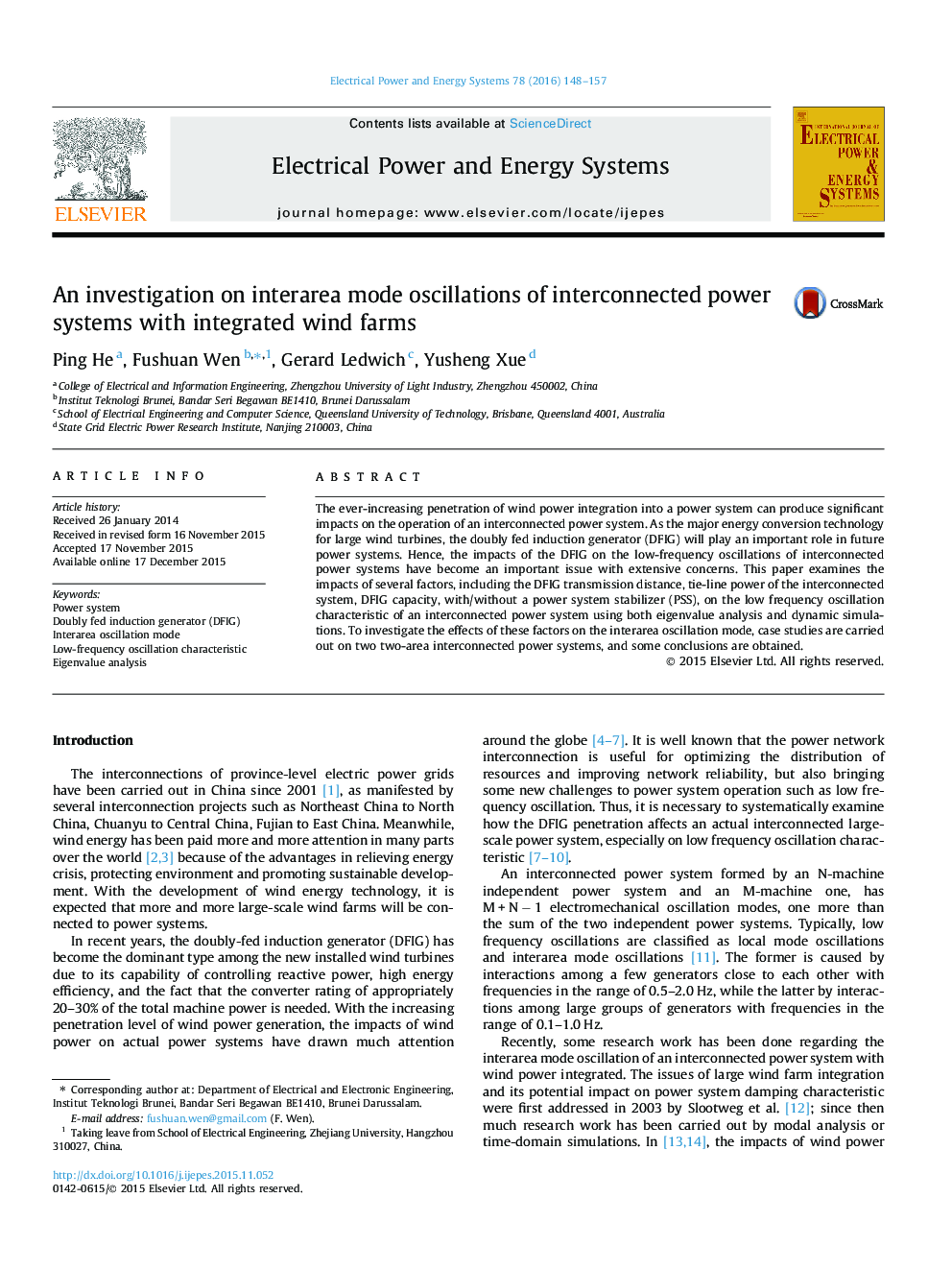| Article ID | Journal | Published Year | Pages | File Type |
|---|---|---|---|---|
| 398418 | International Journal of Electrical Power & Energy Systems | 2016 | 10 Pages |
•The impacts of DFIGs on interconnected power systems are analyzed.•The impacts of the transmission distance, tie-line power, DFIG capacity on system dynamics are examined.•Eigenvalue analysis and dynamic simulations are carried out.
The ever-increasing penetration of wind power integration into a power system can produce significant impacts on the operation of an interconnected power system. As the major energy conversion technology for large wind turbines, the doubly fed induction generator (DFIG) will play an important role in future power systems. Hence, the impacts of the DFIG on the low-frequency oscillations of interconnected power systems have become an important issue with extensive concerns. This paper examines the impacts of several factors, including the DFIG transmission distance, tie-line power of the interconnected system, DFIG capacity, with/without a power system stabilizer (PSS), on the low frequency oscillation characteristic of an interconnected power system using both eigenvalue analysis and dynamic simulations. To investigate the effects of these factors on the interarea oscillation mode, case studies are carried out on two two-area interconnected power systems, and some conclusions are obtained.
